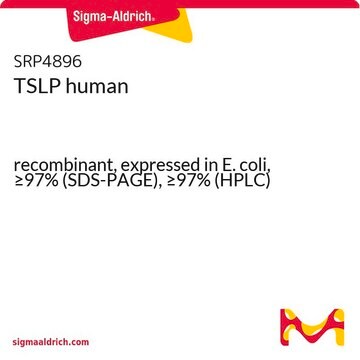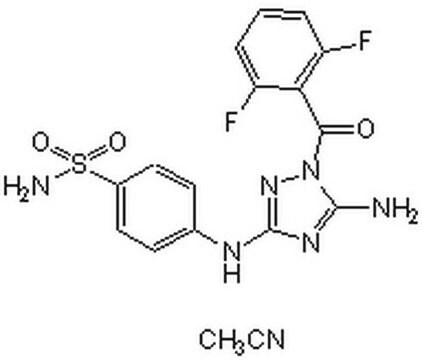C3249
CR8
≥95% (HPLC)
Synonim(y):
(2R)-2-[[9-(1-Methylethyl)-6-[[[4-(2-pyridinyl)phenyl]methyl]amino]-9H-purin-2-yl]amino]-butanol-1, (R)-2-(1-Hydroxybut-2-ylamino)-6-[4-(2-pyridyl)phenylmethylamino]-9-iso-propylpurine, C&R8
About This Item
Polecane produkty
Poziom jakości
Próba
≥95% (HPLC)
Postać
powder
kolor
off-white
rozpuszczalność
DMSO: ≥10 mg/mL
temp. przechowywania
2-8°C
ciąg SMILES
CC[C@H](CO)Nc1nc(NCc2ccc(cc2)-c3ccccn3)c4ncn(C(C)C)c4n1
InChI
1S/C24H29N7O/c1-4-19(14-32)28-24-29-22(21-23(30-24)31(15-27-21)16(2)3)26-13-17-8-10-18(11-9-17)20-7-5-6-12-25-20/h5-12,15-16,19,32H,4,13-14H2,1-3H3,(H2,26,28,29,30)/t19-/m1/s1
Klucz InChI
HOCBJBNQIQQQGT-LJQANCHMSA-N
Powiązane kategorie
Działania biochem./fizjol.
Cechy i korzyści
Kod klasy składowania
11 - Combustible Solids
Klasa zagrożenia wodnego (WGK)
WGK 3
Temperatura zapłonu (°F)
Not applicable
Temperatura zapłonu (°C)
Not applicable
Certyfikaty analizy (CoA)
Poszukaj Certyfikaty analizy (CoA), wpisując numer partii/serii produktów. Numery serii i partii można znaleźć na etykiecie produktu po słowach „seria” lub „partia”.
Masz już ten produkt?
Dokumenty związane z niedawno zakupionymi produktami zostały zamieszczone w Bibliotece dokumentów.
Produkty
Review properties, activators and inhibitors, and available products for researching cyclin-dependent kinases (CDKs).
Nasz zespół naukowców ma doświadczenie we wszystkich obszarach badań, w tym w naukach przyrodniczych, materiałoznawstwie, syntezie chemicznej, chromatografii, analityce i wielu innych dziedzinach.
Skontaktuj się z zespołem ds. pomocy technicznej






